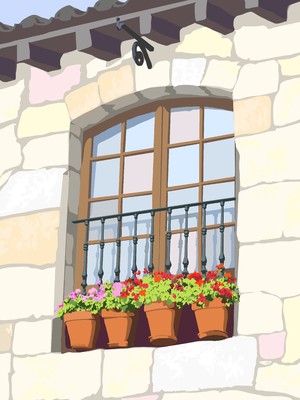Sale on canvas prints! Use code ABCXYZ at checkout for a special discount!

If you are looking for a place to visit which is at the intersection or art and history, Arles in the south of France, is ideal. With its location on the Rhone river (at one time on the Mediterranean itself before the harbor silted up) Arles was an important trading city for much of its life. The Romans made a lasting impression on the area, arriving in 123BC and proceeding to build many architectural wonders. The Roman amphitheater, which still hosts bull fights, dominates several city blocks, and the ruins of an ancient theatre remain as a testament to Roman culture. After the Roman Empire collapsed, Arles’ history became turbulent. By 855, the city was capital of the Kingdom of Arles – a kingdom which changed hands periodically through several centuries, to be slowly swallowed up by France, disappearing entirely in 1378. With its political power weakened, Arles continued to be a major trading hub until the mid-1800s, as goods began to be shipped by railroad rather than barge. While the economy as a whole faltered, the peace and quiet did attract a new kind of tourist: artists. Perhaps the most famous is Van Gogh, who arrived in Arles in 1888. Through his painting of the city streets and Provence landscape surrounding the city, he has become synonymous with Arles. Indeed, many of his major works of art – including Starry Night – were painted here, adding another stroke to the city of Arles’ already colorful history.